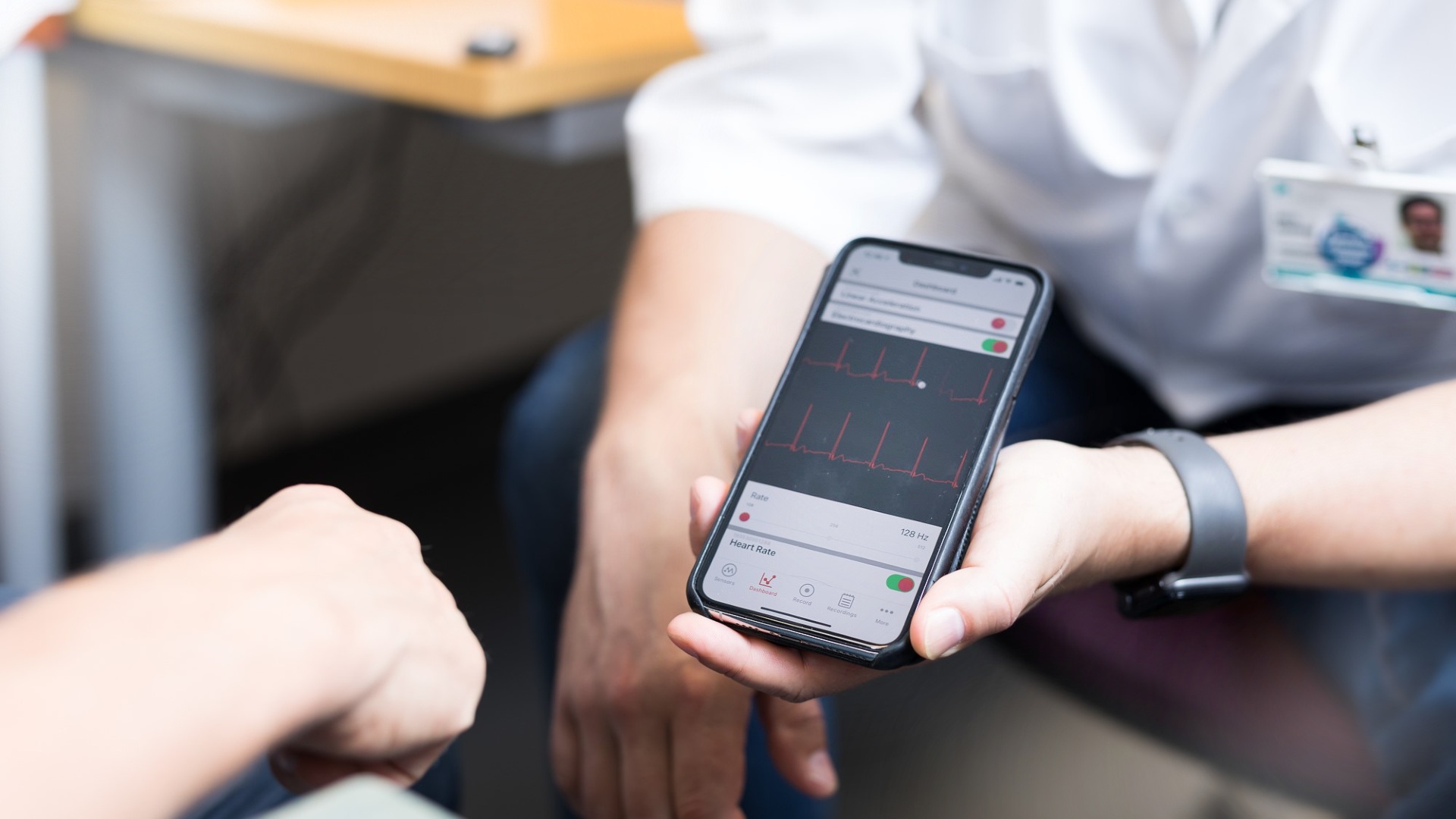How new atrial fibrillation monitoring technology could benefit millions

Atrial fibrillation – an irregular and often rapid heart rhythm or ‘arrhythmia’ – is an increasingly common condition estimated to affect 7.6 million people over the age of 65 in the EU.1
Patients with atrial fibrillation have a five times higher risk of stroke. In fact, the condition is responsible for between 20 and 30 per cent of incidents, which are more disabling and more often fatal than strokes from other causes. It is also the most common heart rhythm disorder2, accounting for up to 2.6 per cent of healthcare spending in European countries.
The challenge of detecting arrhythmias
Detecting asymptomatic arrhythmias, however, is a big clinical challenge. Atrial fibrillation is often symptomless and intermittent and, until now at least, there have only been a few methods of detection available, all needing expensive or invasive equipment and a healthcare professional to interpret the results.
Although handheld or algorithm-based technology is available for screening atrial fibrillation, clinicians need an ECG strip to show the pattern over time to make a diagnosis. Until now though, none of these devices have provided this.
Scientists explore new wearable sensors
In search of a solution, scientists in Finland considered the possibility of using the Movesense Medical device in a chest belt to detect atrial fibrillation.3 In 2018, 220 patients took part in a study in three sites across the country, with ECG recordings analysed by two cardiologists and two different algorithms.
The researchers compared the results detected by a 3-lead Holter, considered the gold standard ECG for heart rhythm analysis, with the Movesense. Their conclusion was that both methods were effective in enabling the cardiologist or the algorithm to detect the condition and P-waves in sinus rhythm – necessary for diagnosis.”
Movesense Medical, a small, lightweight, wireless wearable movement and ECG sensor for health applications, was created by Finnish sports watch expert, Suunto. It is open, programmable and classified as a Class IIa medical device under the EU Medical Device Directive. As an off-the-shelf technology, it saves developers time and money building and testing hardware, helping them to bring solutions to market quicker.
Endocrinologist Professor Bruce Rogers from the University of Central Florida, called it “potentially game-changing technology for both research groups, sports teams, amateur athletes and healthcare investigation.”
Turning wearables into a commercial solution
Looking to turn the Movesense technology into a commercial solution, a group of cardiologists and other medical experts created Finnish start-up Heart2Save. The company’s AiVoni Analysis Service is the first to use the ECG feature of the Movesense sensor, allowing users to identify heart arrhythmia anywhere, anytime.
AiVoni analyses the ECG to determine whether there is a potentially dangerous atrial fibrillation or harmless extrasystoles for example. Linked to a smartphone, it generates a normal ECG strip to enable a clinician to analyse the results quickly by selecting only the relevant reports.
The device is aimed at the largest high-risk group for heart disease and one that the ESC (European Society of Cardiologists) recommends is screened for arrhythmia: those over 65 years old who are overweight, have high blood pressure and diabetes, and who smoke or exercise too little.
Speed to market is key
The Heart2Save AiVoni solution is just one example of how Suunto’s Movesense Medical technology is helping innovative companies develop solutions that improve patient outcomes and increase healthcare efficiency. With interest in self-monitoring and wearable sensors continuing to grow, more such innovations can be expected in the future.
Medically-approved wearable technology, such as Movesense, means innovators do not need to develop, test, patent, or seek authorization for hardware, and enables them to focus on what they do best.
As the Heart2Save experience shows, certified hardware can make a real difference and get a new product to market in a heartbeat.
Read more about Movesense Medical Sensor
See showcase projects by other companies
References
1 Di Carlo A, Bellino L, Consoli D, et al. Prevalence of atrial fibrillation in the Italian elderly population and projections from 2020 to 2060 for Italy and the European Union: the FAI Project. Europace. 2019. doi:10.1093/europace/euz141.
2 2016 ESC Guidelines for the management of atrial fibrillation developed in collaboration with EACTS. Eur Heart J. 2016;37:2893–2962. doi:10.1093/eurheartj/ehw210.
